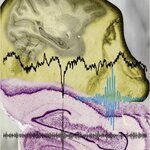Neuroscience

Some people take risks with investments while others on safety with their money and in other business activities. Researchers have looked at the attitudes towards risk in a group of 56 subjects and found that in people who preferred safety, certain regions of the brain show a higher level of activation when they are confronted with quite unforeseeable situations.
First, the researchers tested a total of 56 subjects for their willingness to take risks. "In an economic game, the test subjects had a choice between a secured payout and a lottery," reports first author Sarah Rudorf…

The only instrument that we have to achieve a comprehension of the environment and our selves as a part of it, is the prefrontal cortex.
The frontal lobes give us the voluntary movement, the decision-making, the problem solving structure, and future planning process. They are divided in the prefrontal cortex, the premotor area and the motor area. The premotor and motor areas of the frontal lobes contain neurons that control the execution of voluntary muscle movement, while the prefrontal cortex is responsible for personality expression, the comprehension of material concepts and ideas…

While in deep sleep, our hippocampus sends messages to our cortex and changes its plasticity, possibly transferring recently acquired knowledge to long-term memory.
How exactly is this done? Scientists from the Max Planck Institute for Biological Cybernetics have developed a multimodal methodology called "neural event-triggered functional magnetic resonance imaging" (NET-fMRI) and presented the very first results obtained using it in experiments with both anesthetized and awake, behaving monkeys.
Many invasive studies in nonhuman primates and clinical investigations in human patients have…

A recent study in the Journal of Neuroscience (here) has conveniently coincided with the announcement of the High Profile Affair of the Year awardee. The two have come together to stir up interest in having some sort of fidelity pill that spoken-for men could take to stop their philandering ways. And, based on science, that pill could be oxytocin. You can see this very topic discussed here, featuring this author as the lone defender of man.
So let's talk about the study. You will be disappointed.
The researchers at the University of Bonn took single and married men- about 80 in all- and gave…

We know brain activity changes many times over the course of a day. When listening, this oscillation synchronizes to the sounds we are hearing. Not only that, say researchers from the Max Planck Institute for Human Cognitive and Brain Sciences, this oscillation influences the way we listen.
Hearing abilities also oscillate and depend on the exact timing of one’s brain rhythms. This discovery that sound, brain, and behavior are so intimately coupled will help us to learn more about listening abilities in hearing loss and perhaps people who stutter.
Our world is full of cyclic phenomena; some…

Most people can't read lips. If you turn down the sound on your television, you can see why it is difficule. Unless trained, if you see someone speak a sentence without the accompanying sounds, you are unlikely to recognize many words but it turns out people can lip-read themselves better than they can lip-read others, and that shows an interesting link between speech perception and speech production. Nancy Tye-Murray and colleagues from Washington University developed simple, nonsensical sentences from word boards, e.g. The duck watched the boy and The snail watched the goose, so that…

OptiNose US Inc. has announced that its Norwegian affiliate was awarded $2.1 million by the Research Council of Norway to study its nasal drug delivery technology in the treatment of autism spectrum disorders (ASDs).
OptiNose will use this research grant to investigate "nose-to-brain" transport of oxytocin via the patented OptiNose Bi-Directional delivery technology for the treatment of ASDs. Partners who have agreed to collaborate with OptiNose in the project include the Department of Psychiatry at Oslo University Hospital, SINTEF and Smerud Medical Research and Norwegian academic…

An Asian elephant named Koshik can speak exactly five words in Korean that can be readily understood by those who know the language. The elephant accomplishes this in a most unusual way: he vocalizes with his trunk in his mouth.
The words include "annyong" ("hello"), "anja" ("sit down"), "aniya" ("no"), "nuo" ("lie down"), and "choah" ("good"). While cool on their own, Koshik's language skills may also provide important insights into the biology and evolution of complex vocal learning, an ability that is critical for human speech and music, the researchers say.
"Human speech…

If suffer from arachnophobia, fear or spiders, you know that rationality does not enter into it. Imagining a huge and hairy tarantula crawling on your arm in a therapist’s office is not less scary than coming out of the shower and seeing a tiny spider.
Why are phobias so hard to shake? It's not as easy as extinguishing the fear response. Instead of trying to erase the memory of the fear provoking stimuli, creating new, competitive memory traces may be the solution.
It has been speculated for some time that neuronal brain circuits responsible for extinguishing fear differ from…

Why, in difficult driving conditions or when lost, do people turn down the volume of their radio? Some new research links motor skills and perception, specifically as it relates to a second finding; a new understanding of what the left and right brain hemispheres "hear."
The findings, the first to match human behavior with left brain/right brain auditory processing tasks, may eventually point to strategies that could help stroke patients recover their language abilities and to improve speech recognition in children with dyslexia. "Language is processed mainly in the left hemisphere, and…